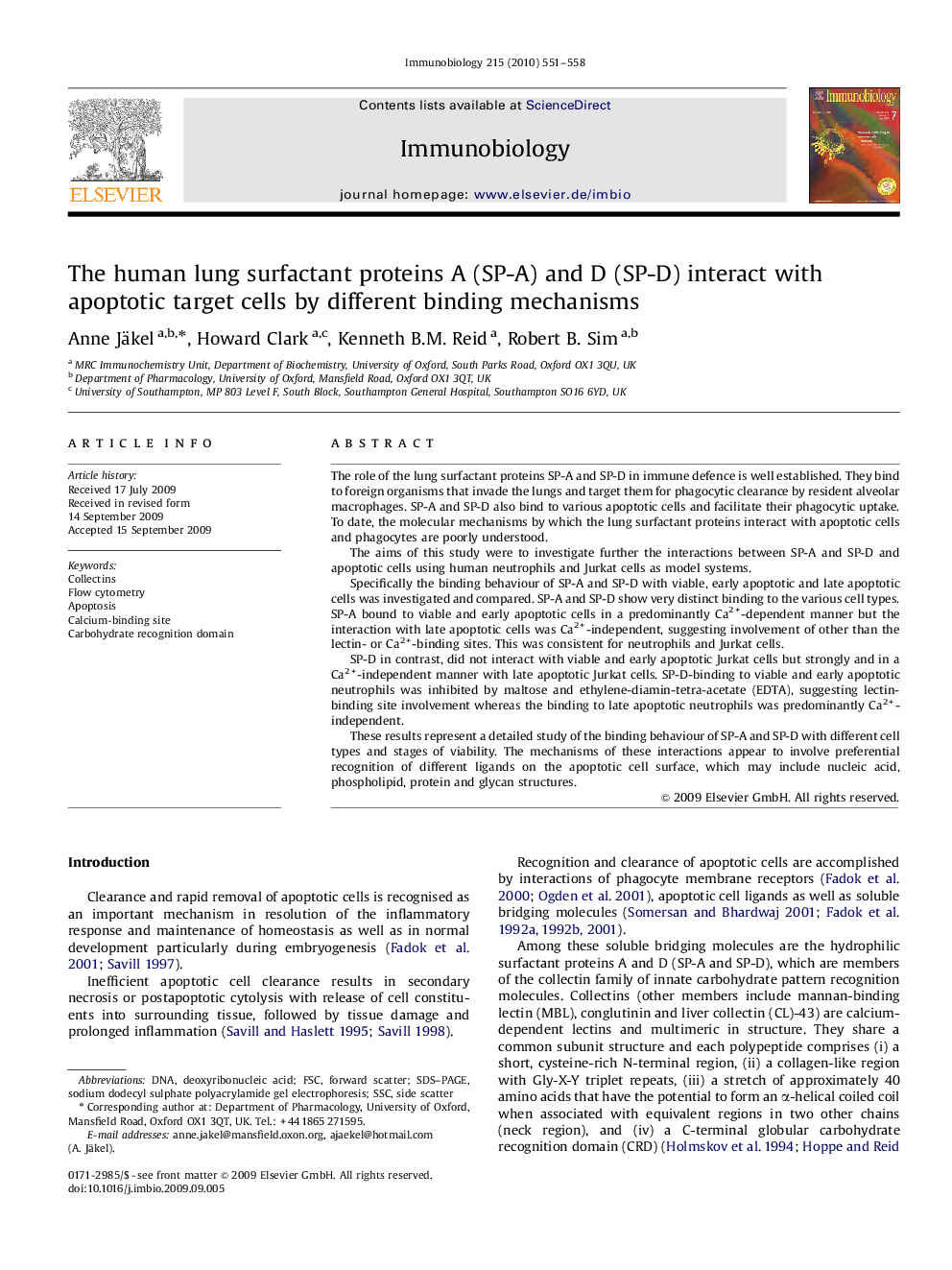| کد مقاله | کد نشریه | سال انتشار | مقاله انگلیسی | نسخه تمام متن |
|---|---|---|---|---|
| 2184037 | 1095618 | 2010 | 8 صفحه PDF | دانلود رایگان |

The role of the lung surfactant proteins SP-A and SP-D in immune defence is well established. They bind to foreign organisms that invade the lungs and target them for phagocytic clearance by resident alveolar macrophages. SP-A and SP-D also bind to various apoptotic cells and facilitate their phagocytic uptake. To date, the molecular mechanisms by which the lung surfactant proteins interact with apoptotic cells and phagocytes are poorly understood.The aims of this study were to investigate further the interactions between SP-A and SP-D and apoptotic cells using human neutrophils and Jurkat cells as model systems.Specifically the binding behaviour of SP-A and SP-D with viable, early apoptotic and late apoptotic cells was investigated and compared. SP-A and SP-D show very distinct binding to the various cell types. SP-A bound to viable and early apoptotic cells in a predominantly Ca2+-dependent manner but the interaction with late apoptotic cells was Ca2+-independent, suggesting involvement of other than the lectin- or Ca2+-binding sites. This was consistent for neutrophils and Jurkat cells.SP-D in contrast, did not interact with viable and early apoptotic Jurkat cells but strongly and in a Ca2+-independent manner with late apoptotic Jurkat cells. SP-D-binding to viable and early apoptotic neutrophils was inhibited by maltose and ethylene-diamin-tetra-acetate (EDTA), suggesting lectin-binding site involvement whereas the binding to late apoptotic neutrophils was predominantly Ca2+-independent.These results represent a detailed study of the binding behaviour of SP-A and SP-D with different cell types and stages of viability. The mechanisms of these interactions appear to involve preferential recognition of different ligands on the apoptotic cell surface, which may include nucleic acid, phospholipid, protein and glycan structures.
Journal: Immunobiology - Volume 215, Issue 7, July 2010, Pages 551–558